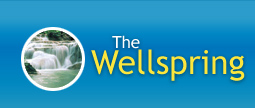Myth: Learning, Thought, and Intelligence Is a Process of the Brain Alone.
Fact:
Learning, thought, creativity, and intelligence are not processes of the brain alone, but of the whole body. Sensations, movements, emotions, and brain integrative functions are grounded in the body. The qualities we associate with the mind can never exist separate from the body. —Carla Hannaford, PhD*
Many factors in our world today--high stress levels, sedentary lifestyle, etc.--appear to conspire against our learning. Hannaford seeks to deepen our understanding of the mind/body system's enormous capacity to learn, and the role of movement in activating that capacity, to improve not only our ability to learn, but also our creativity and wellbeing.As a neuroscientist, she draws on a wealth of current research to show that the body plays an integral part in all of our intellectual processes. The plasticity and "exquisite organization" of the nervous system gives us a window on the potential for lifelong learning and healing that means no one should be limited with labels like learning disabled, emotionally handicapped, or mentally retarded.
Research on the brain's development dispels the deeply-rooted belief--unique to Western culture--that intellectual activity can exist apart from our bodies. Thought, creativity, and learning arise from experience. We are born with almost all our full complement of nerve cells or neurons, of which there are three main types: sensory, intermediate, and motor. As we experience, we bring in information and build neural networks that allow us to use that information to better understand the world. A major component of experience is sensory input from our environment via our eyes, ears, taste buds, nose, and skin (like most, she leaves out the vestibular system which senses motion--the earliest, and according to Prescott,* the most important early component of our sensory system); and from the organs of our bodies that are, in essence, finely-tuned sensory receptors. These experiences form intricate patterns of neurons that govern higher-level brain development. As learning proceeds, the system continues to self-organize in ever more complex ways. The richer our sensory environment is, and the greater our freedom to explore it, the more intricate are the patterns that develop.
Hannaford quotes Einstein: "Learning is experience. Everything else is just information."
Experiences, involving the senses, emotions, and movements, are direct and real. Words can help us organize our thoughts about the sensations, but are no substitute for experience.
* All remaining quotes in this myth are by Carla Hannaford, PhD
Optimizing Early Learning Environments
Emotions and Learning
Bonding and the Limbic System
Implications for Schooling
Impact of Stress on Learning and Health
Emotions, TV, and Health

